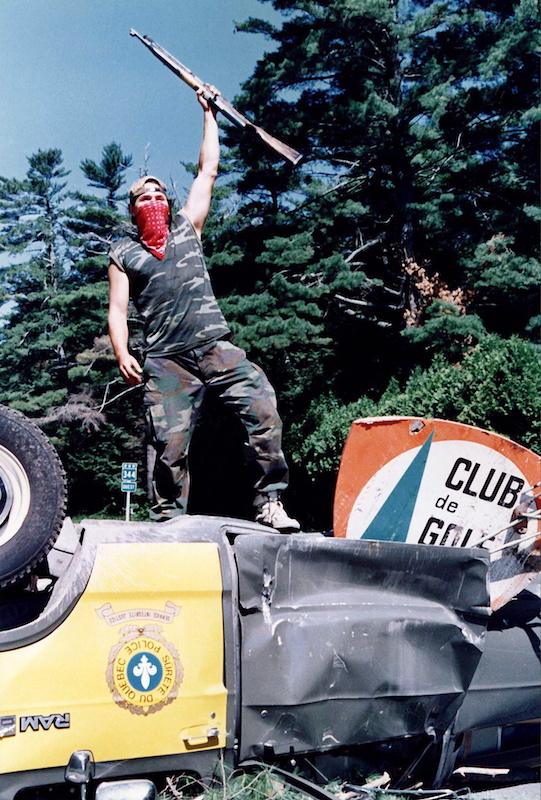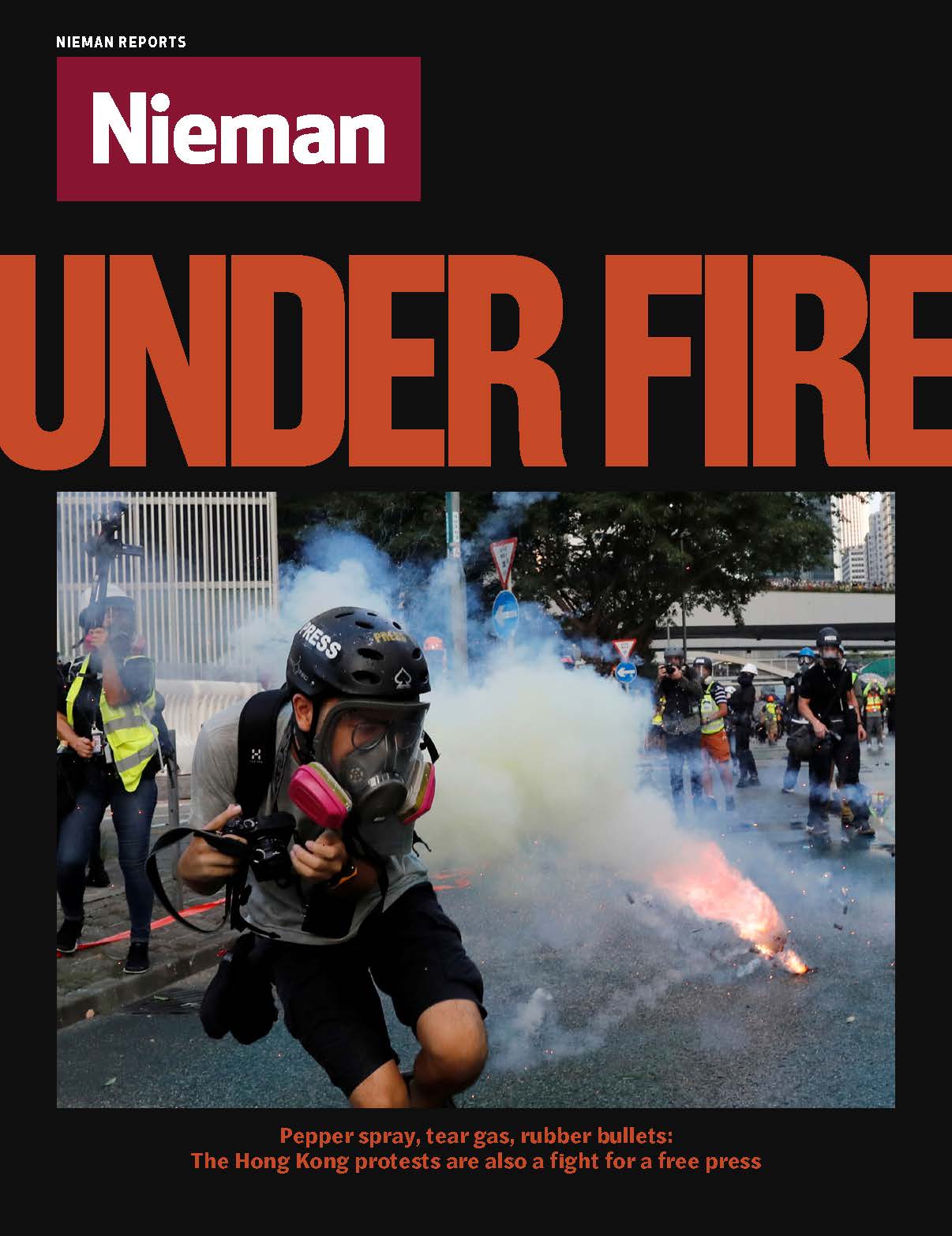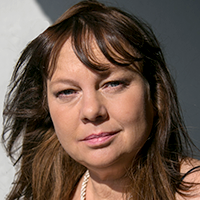
A Mohawk man stands on an overturned police vehicle blocking a highway at the Kahnesetake reservation near Oka, Quebec after a police assault to remove Mohawk barriers failed in 1990. A 78-day standoff arose after Oka announced plans to expand a golf course onto the reservation, directly on top of a graveyard
My mom, like most Indigenous women of her time, didn’t really value Western education. It was my dad, an Italian son of immigrants, who pushed me to go to university. He knew a diploma was a key to the middle class and security.
I wanted to please my dad, but I had no idea what I would study until my grade 11 teacher, Ken Stunnell, suggested journalism, since I liked to write and debate politics.
Around that time, in 1990, a small Quebec town called Oka, famous for its cheese, became infamous for an armed 78-day stand-off. After Oka announced plans to expand a 9-hole golf course onto the reservation of Kanehsatake directly on top of the community’s graveyard, the Mohawks blocked the road. Ultimately the dispute pitted 800 armed soldiers against 28 Mohawk warriors, 16 women, and six children. It ended with the Mohawks walking out—accepting that they would be arrested—to avoid further violence.
In 1995, there was an incident known as Ipperwash. About 35 Ojibway men, women, and children occupied an abandoned military base in Ontario. The land had been seized from their community during World War II. A promise to return it never was honored. Instead, land was being turned over to the province. Police shot and killed a man whom they claimed was armed. The media—not one of whom had been present at the raid—believed the police. Only years later would the police be exposed for their lie.
That same year, there was a dispute between a farmer and some Secwepemc traditional people near Gustafsen Lake, British Columbia. For years a sacred ceremony called the Sundance had been held on disputed land. Yet this time conflict arose between the Sundancers and local ranchers. During a 31-day standoff, police fired 77,000 rounds of ammunition at about 20 Secwepemc men and women. The media wasn’t there for Gustafsen Lake either. That did not stop them from writing op-eds.
For the most part media stories and editorials portrayed the Indigenous people as angry warriors threatening an otherwise peaceful Canada. Rarely were the children and women shown. Rarely was the full history of the dispute told. It made me angry.
I didn’t know it at the time, but I wasn’t alone in my anger. There is a 10-year period in Indigenous art history that is now known as the post-Oka period, where every painting, poem, and story is angry, expressing pain and violence.
I believe journalism was a force for good and critical to democracy. I just didn’t think it worked in Canada. Canadians were very good at calling out the legacy of racism and colonialism in other countries. They just couldn’t see it at home.
I saw the documentary “Kanehsatake: 270 Years of Resistance” by Abenaki filmmaker Alanis Obomsawin, which proved their claim to the land. The documentary convinced me that history was key to proving the truth. The problem was Canadians didn’t know Indigenous history. I changed to a double major, journalism and history.
My First Nation, Pikwàkanagàn, invited me to a graduation ceremony at the Gym/Bingo Hall. Few kids in our community ever finished high school, much less university and the celebration was meant to encourage more youths to graduate. Moms and aunties laid out a buffet of bannock, potato salad, and venison stew. That year, 1998, I remember there being only three of us. The band council rented black robes and tasselled caps for us to wear. An elder smudged and blessed us. The chief shook our hands and asked each of us to speak about why we’d chosen university.
The first graduate had studied law. He planned to fight for the return of our stolen land and our rights. The second graduate had studied social work. She spoke of the harm residential schools and alcohol had wreaked upon our people. She would heal us.
Nothing I could say about a journalism degree could compare to that. So instead I spoke about the history courses I had taken. I promised to write a history that would tell the truth about our people, so that all people will know it. This earned approving nods.
I didn’t understand what Indigenous journalism could do for Canada. But someone did.
Amid the unrest of the post-Oka period, the federal government had ordered a Royal Commission on Aboriginal Peoples. Most of the recommendations in the 1996 report were ignored, but a very important one came to be: the creation of an Indigenous television station.
Few industry stakeholders supported the creation of this Indigenous network. The public authority which regulates Canadian broadcasting forced cable companies to carry Aboriginal Peoples Television Network (APTN). In an era with only a couple dozen TV channels, they placed APTN on channel 70, far from any others, as isolated on the airwaves as our people were in life.
APTN launched its newsroom in 2000. For me, that was serendipity. Perhaps fate. I was just finishing my M.A. in history and looking for work. Most of the staff were under 30 and, for many, this was our first full-time job. Few of the reporters had journalism degrees. Our news director, Dan David, a Mohawk from Kanehsatake, told us: we needed to learn fast and get this right. If we failed, our people would never have another chance at a newsroom of our own.
Only two years out of j-school, I was assigned to cover Parliament Hill, a job most reporters wait a lifetime for. Over the years, APTN’s newsroom changed Canada’s political and media landscape. We covered a series of standoffs over land. We wrote stories about missing Indigenous women, residential school survivors, broken treaties, dilapidated housing, youth suicide, and moldy schools. Back in 2000, the minister of Indian Affairs would not speak to us, not even in a scrum. I was hired to lead the APTN newsroom in 2012. We gave our people a way to communicate with each other. We forced Indigenous journalism into Canada’s media landscape. It happened word by word, story by story, one truth at a time.
In 2016, for the first time in history, a prime minister did a sit-down interview with Indigenous media. Just a few months earlier Canada’s Truth and Reconciliation Commission had released its report, including a call for media to do a better job, and for universities to include Indigenous history in the curriculum. For many years Canadians asked: what do Indigenous peoples want? For the first time we have a word to express it: “reconciliation.”
I believe reconciliation will come but first we need truth. That is why I do what I do. It is a promise I made many years ago in a bingo hall at my graduation ceremony. I write the truth about my people, so that all people will know it.


